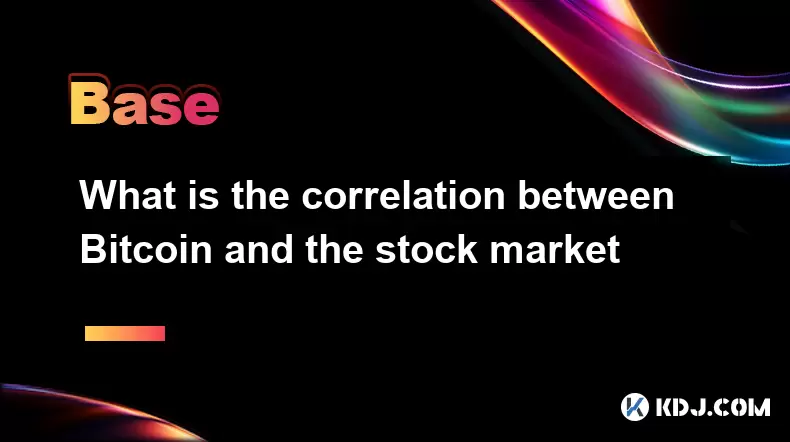-
 Bitcoin
Bitcoin $120400
1.77% -
 Ethereum
Ethereum $3615
7.90% -
 XRP
XRP $3.580
17.84% -
 Tether USDt
Tether USDt $1.001
0.06% -
 BNB
BNB $729.4
1.25% -
 Solana
Solana $179.9
5.04% -
 USDC
USDC $0.0000
0.01% -
 Dogecoin
Dogecoin $0.2311
8.22% -
 TRON
TRON $0.3226
4.04% -
 Cardano
Cardano $0.8490
12.85% -
 Hyperliquid
Hyperliquid $46.45
0.72% -
 Stellar
Stellar $0.4913
8.54% -
 Sui
Sui $4.027
2.00% -
 Chainlink
Chainlink $18.51
11.67% -
 Hedera
Hedera $0.2818
21.51% -
 Avalanche
Avalanche $24.03
7.40% -
 Bitcoin Cash
Bitcoin Cash $508.5
2.90% -
 Shiba Inu
Shiba Inu $0.00001496
3.24% -
 UNUS SED LEO
UNUS SED LEO $8.961
1.83% -
 Toncoin
Toncoin $3.264
3.13% -
 Litecoin
Litecoin $104.6
8.15% -
 Polkadot
Polkadot $4.389
6.11% -
 Uniswap
Uniswap $9.924
10.63% -
 Monero
Monero $337.9
0.49% -
 Pepe
Pepe $0.00001376
2.79% -
 Bitget Token
Bitget Token $4.830
2.46% -
 Ethena USDe
Ethena USDe $1.001
0.05% -
 Dai
Dai $1.000
0.02% -
 Aave
Aave $325.2
1.66% -
 Bittensor
Bittensor $423.7
-0.85%
What Is a Bid-Ask Spread?
The bid-ask spread, influenced by liquidity, volatility, and trading volume, represents the price differential between the highest buyer bid and lowest seller ask, impacting trading costs and potential profitability.
Oct 18, 2024 at 03:36 pm

What Is a Bid-Ask Spread?
1. Definition
The bid-ask spread is the difference between the bid price and the ask price of an asset. The bid price is the highest price a buyer is willing to pay for the asset, while the ask price is the lowest price a seller is willing to accept for the asset.
2. Importance
The bid-ask spread is important for several reasons:
- It represents the liquidity of an asset: A narrower spread indicates a more liquid asset, while a wider spread indicates a less liquid asset.
- It affects the cost of trading: The larger the spread, the more expensive it is to trade the asset.
- It can be used to profit from market movements: Traders can profit from the bid-ask spread by buying an asset at the bid price and selling it at the ask price.
3. Factors Affecting the Bid-Ask Spread
The bid-ask spread can be affected by several factors, including:
- Liquidity: More liquid assets typically have narrower spreads.
- Market Volatility: High volatility can widen the bid-ask spread.
- Trading Volume: Higher trading volume can decrease the spread.
- Brokerage Fees: Some brokerages charge fees that can widen the spread.
4. Calculating the Bid-Ask Spread
The bid-ask spread is calculated as follows:
Bid-Ask Spread = Ask Price - Bid PriceFor example, if an asset has a bid price of $100 and an ask price of $102, the bid-ask spread is $2.
5. Impact of the Bid-Ask Spread
The bid-ask spread can have several impacts on trading:
- It increases the cost of trading: Traders must account for the spread when calculating the profit or loss on a trade.
- It can limit the profitability of trading: The wider the spread, the less profitable a trade can be.
- It can make it difficult to close trades quickly: A wide spread can make it difficult to exit a trade quickly at a favorable price.
6. Reducing the Impact of the Bid-Ask Spread
Traders can reduce the impact of the bid-ask spread by:
- Trading more liquid assets: Assets with narrow spreads are less expensive to trade.
- Trading during peak trading hours: Liquidity tends to be higher during these hours, resulting in narrower spreads.
- Using limit orders: Limit orders allow traders to specify the price at which they want to buy or sell an asset, which can help to minimize the spread.
- Shopping around for the best brokerage: Different brokerages charge different fees, which can affect the spread.
Disclaimer:info@kdj.com
The information provided is not trading advice. kdj.com does not assume any responsibility for any investments made based on the information provided in this article. Cryptocurrencies are highly volatile and it is highly recommended that you invest with caution after thorough research!
If you believe that the content used on this website infringes your copyright, please contact us immediately (info@kdj.com) and we will delete it promptly.
- Bitcoin, Cloud Mining, Crypto Wealth: Riding the Bull Run in Style
- 2025-07-18 12:30:12
- Ethereum Gas Fees, ERA Airdrop: A New Yorker's Take on Crypto Chaos
- 2025-07-18 12:50:12
- Bitcoin, Altcoins, and the Crypto Market: Navigating Trump's Crypto Ventures and the Evolving Digital Landscape
- 2025-07-18 12:50:12
- Bitcoin Holdings and the Smarter Web: A Match Made in Digital Heaven?
- 2025-07-18 12:10:12
- Bitcoin, MSTR & Saylor's Strategy: A Winning Trifecta?
- 2025-07-18 08:30:13
- Bitcoin Mortgages Down Under: A New Wave in Australian Homeownership?
- 2025-07-18 08:50:12
Related knowledge

What is the Bitcoin dominance index
Jul 12,2025 at 10:35pm
Understanding the Bitcoin Dominance IndexThe Bitcoin Dominance Index, often abbreviated as BTC.D, is a metric used to measure Bitcoin's market capital...

What is the Bitcoin dominance index
Jul 11,2025 at 04:29am
What is the Bitcoin Dominance Index?The Bitcoin Dominance Index is a metric used to gauge Bitcoin's market capitalization relative to the total market...

What is the correlation between Bitcoin and the stock market
Jul 18,2025 at 04:56am
Understanding the Correlation Between Bitcoin and the Stock MarketThe correlation between Bitcoin and the stock market has become a topic of increasin...

Can crypto be a hedge against inflation
Jul 14,2025 at 12:21am
Understanding the Concept of Hedging Against InflationInflation refers to the general increase in prices and fall in the purchasing value of money ove...

Can crypto be a hedge against inflation
Jul 12,2025 at 12:07pm
Understanding the Role of Blockchain in Decentralized Finance (DeFi)Blockchain technology serves as the backbone of decentralized finance, offering a ...

What are account abstraction wallets
Jul 13,2025 at 01:43am
Understanding the Concept of Account AbstractionAccount abstraction is a term frequently used in the Ethereum ecosystem, particularly within discussio...

What is the Bitcoin dominance index
Jul 12,2025 at 10:35pm
Understanding the Bitcoin Dominance IndexThe Bitcoin Dominance Index, often abbreviated as BTC.D, is a metric used to measure Bitcoin's market capital...

What is the Bitcoin dominance index
Jul 11,2025 at 04:29am
What is the Bitcoin Dominance Index?The Bitcoin Dominance Index is a metric used to gauge Bitcoin's market capitalization relative to the total market...

What is the correlation between Bitcoin and the stock market
Jul 18,2025 at 04:56am
Understanding the Correlation Between Bitcoin and the Stock MarketThe correlation between Bitcoin and the stock market has become a topic of increasin...

Can crypto be a hedge against inflation
Jul 14,2025 at 12:21am
Understanding the Concept of Hedging Against InflationInflation refers to the general increase in prices and fall in the purchasing value of money ove...

Can crypto be a hedge against inflation
Jul 12,2025 at 12:07pm
Understanding the Role of Blockchain in Decentralized Finance (DeFi)Blockchain technology serves as the backbone of decentralized finance, offering a ...

What are account abstraction wallets
Jul 13,2025 at 01:43am
Understanding the Concept of Account AbstractionAccount abstraction is a term frequently used in the Ethereum ecosystem, particularly within discussio...
See all articles

























































































